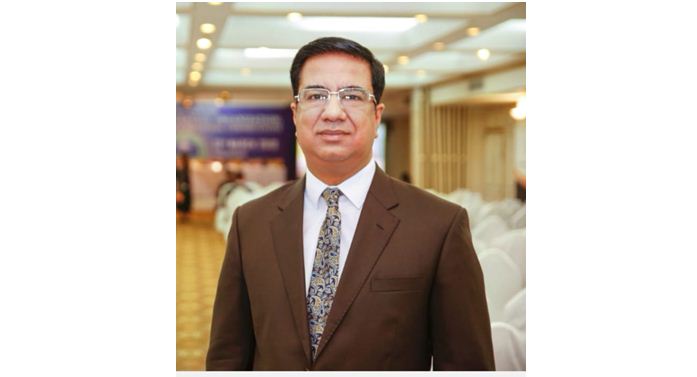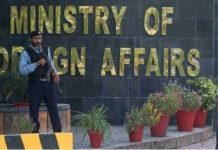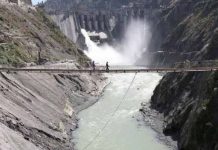Khalid TaimurAkram
The 21stcentury is the most revolutionary age in history. The pace and scope of the transformation have never been this great. However,the world is also facing complexities. Therefore, it is important to take full account of the complex balance sheet involving challenges and opportunities to access different aspects of International Relations in the Asia Pacific region. The Asia-Pacific is one of the most important regions globally, covering a substantial amount of its landmass, number of people, and share of economic activity.
The region is comprised of the countries which are emerging economics. However, the emerging challenges in the region, i.e., rising non-traditional security (NTS) threats, are vital to examine in changing dynamics of the world. In this aspect, the article highlights the challenges in the Asia Pacific region. The study also provides the way forward in curtailing the common challenges with multilateral cooperation under the framework of Association of Southeast Asian Nations (ASEAN). Moreover, the article also elaborates on the existing opportunities in the Asia Pacific region in the context of global politics.
Explaining the Regional Contours:
The Asia Pacific region is encircledwith both complexities and opportunities. Therefore, to understand the nature of challenges and existing potential in the wider region, examining the global politics in this multipolar world is highly significant. While analyzing the historical perspective, it is evident that the era after the cold war brought many changes. The liberal framework vis-à-vis peace was considered the most efficient and universal blueprint to ‘repair’ or ‘reconstruct’ post-conflict societies. The model or established framework focused on building up neo-liberal state institutions, economies, and societies that resembled the Western ones.From the 1990s, liberal peace started to be criticized with the movement of the ‘peace from below’. A new model was discussed, which was the ‘post-liberal peace model’. The model defied the neo-liberal, top-down Western-based programs which fail to build sustainable peace. It aimed to prevent the issue of externally-imposed peacebuilding emanated from the local realities and needs. Moreover, it also redefined the link between international organizations (intervening for peacebuilding) and the local societies affected by the conflicts. However, it created legitimacy issues. Post-liberal peace, or more precisely hybridity, is increasingly used in peacebuilding and is already criticized. It becomes a dynamic interaction made of opposition, resistance and adaptation, cooperation and compromise. In recent years, the liberal international economic order has been facing legitimacy challenges. The ongoing deadly pandemic of Covid-19, amid the looming non-traditional security threats both require multilateral interventions, arrived when the established liberal international order had already been facing severe strains.
For local and international peacebuilding, developing mutual consensus is significant. It requires the prominent role of the international or regional organizations working for conflict resolutions or peacebuilding under global politics. However, under the neo-liberal world order, the legitimacy of states has been challenged. Therefore, it has been criticized by a significant number of regional and international players in order to create peace in this multipolar world order through respect, legitimacy, and sovereignty.The Asia Pacific regional states are facing severe challenges. The threats range from regional conflicts, internal disputes, andemerging non-traditional security challenges (Climate change, rising sea level, pandemic,Etc).
Contemporary Challenges in the Asia Pacific Region: An Overview
No state is immune from the devastating impacts of rising non-traditional security challenges (NTS), including hybrid warfare,transnational crimes, Cross-border environmental degradation, food insecurity, climate change, rising temperature, infectious diseases, drug trafficking, human smuggling, Etc. In the changing dynamics of the world, these threats are causing serious risks on the national security pillars of countries. These common global threats call for global solutions. Theconsequences of environmental threats are associated with the non-conventional nature of the security paradigm. In this aspect, the countries of the Asia Pacific regions are also facing repercussions due to these non-conventional security perils.
In the book ‘2020 world of war’, the authors’ Paul Cornish and Kingsley Donaldson argued that an absence of national strategy leaves governments in an entirely reactive position in the current complex operating environment. It has become far more complex because of the recent environmental issues, cybersecurity to rapidindustrialization, and development in weapon technology. In recent times, security exists in a world of changing climate, mass migrations, resource issues, risks on the healthcare system, and financial security. Post-realistic, Unlike the traditional realists, do include the environment as an important security concern. Therefore, the economic foundation of a country has its effect on the economy. Considering the economy as a pillar of national security, it is vital that environmental hazards have negative implications on the economy as it slows the pace of growth, hamper social cohesion and destabilize the political structure.Under these assertions, the Asia Pacific regional countries are more inclined towards cooperation in countering these perils.The Governments must examine the consequences of environmental issues on security and socio-economic fabrics more closely.In this aspect, Track-II diplomacy can also play a substantial role.
Track-II diplomacy mechanisms bring academics and other interested parties together in a non-official, non-governmental capacity to discuss relevant issues. These meetings help generate awareness, innovativeideas, and approaches to security concerns, build confidenceand create understandings and commitments. The transboundary and non-military character of NTS issues has compelled states across the region to seek deeper and more substantial levels of security integration. In this regard, the Committee on Security Cooperation in the Asia Pacific (CSCAP)and theAssociation of Southeast Asian Nations (ASEAN) playa significant role as the primary Track II vehicles. Under the ASEAN framework, the Asia Pacific countries can formulate an integrated mechanism to counter these common menaces. ASEAN has a pivotal role in the Asia Pacific region, and due to its effective role, the regionalcooperation among countries isexperiencing a positivetransformation.
Pivotal Role of ASEAN in the Asia Pacific Regional Cooperation
ASEAN is substantially contributing to the socio-economic development of Asia Pacific region countries and enhancing multilateral cooperation. Apart from the regional economic, social and cultural development, ASEAN has an ambitious agenda to promote regional peace and stability by adhering to justice and the rule of law in the inter-state relationships in the region. In its more than 40 years of history, ASEAN has steadily progressed in internal economic integration. In 2003, the ASEAN leaders established an ASEAN integrated community comprising three pillars: security community, economic community, and sociocultural community. In this aspect, it can be seen that the ASEAN countries are inclined towards resolving their internal disputes, combating NTS threats vis-à-vis cooperation under the ASEAN framework, and contributing to the stability of the Asia Pacific region.
Indonesia is the major economic power in the ASEAN region. Moreover, it has been assisting other states in resolving their conflicts. Within ASEAN, Indonesia enjoys the limelight as a new focus. In recent years, China’s engagement with ASEAN has increased manifold. Both are linked via multilateral frameworks, institutional involvements, constructive engagements, and aid projects. Moreover, the ASEAN countries are directly part of the BRI and Asia Pacific Economic Cooperation (APEC) projects. Therefore, the full inclusion of China as a member state in ASEAN would be beneficial for the region and all parties involved. Pakistan has the status of Sectoral Dialogue Partner (SDP) in ASEAN. Indonesia has been helping Pakistan to attain the status of a full dialogue partner in the organization. The relationship between Indonesia and Pakistan has marked significant progress in recent times. The valuable assetof the relation is that the ASEAN countries are convinced of Pakistan’s sincere intentions to engage fruitfully with the region. In this aspect, ASEAN-Pakistan Joint Sectoral Committee works effectively to seek deeper association with the Asia Pacific region and ASEAN countries.
Opportunities in Asia Pacific Region in the Context of Global Politics
The Asia Pacific region has experienced important economic development progress since the formulation of strategy 2020. In a book, ‘Why Nations Fail’, the authors’ Daron Acemoglu and James A. Robinson analyzed how nations or societies failed to get prosperity. They stated that the economy is a major pillar for any society to grow internationally and secure. Countries differ in their economic structures and progressive patterns because of their different institutions. In this aspect, the role of institutions is necessary to examine the economic rules and incentives that motivate people. They concluded that the role of “Extractive and Inclusive political institutions” is vital that in the failure of any state.
Under these assertions, it can be clearly understood that the role of institutions in the Asia Pacific for regional cooperation and constructive regional engagement is highly significant. In this regard, the region has exceptional potential for sustainable growth and strategicalliance building while having a rising economy, i.e., Indonesia, and effective regional organizations such as ASEAN and Belt and Road Initiative (BRI).The Asia Pacific regional countries are amid non-traditional securitychallenges. However, they also work collectively to resolve their internal disputesand combat emerging non-traditionalsecurity threats. These common menacesrequire global solutions. Therefore, ASEAN countries integrate under theirconsolidatedpillars to promote peace, strengthen maritime security, build nations’resilience, and tackle common threats.
The writer is the Executive Director, Center for Global & Strategic Studies (CGSS), Islamabad

















